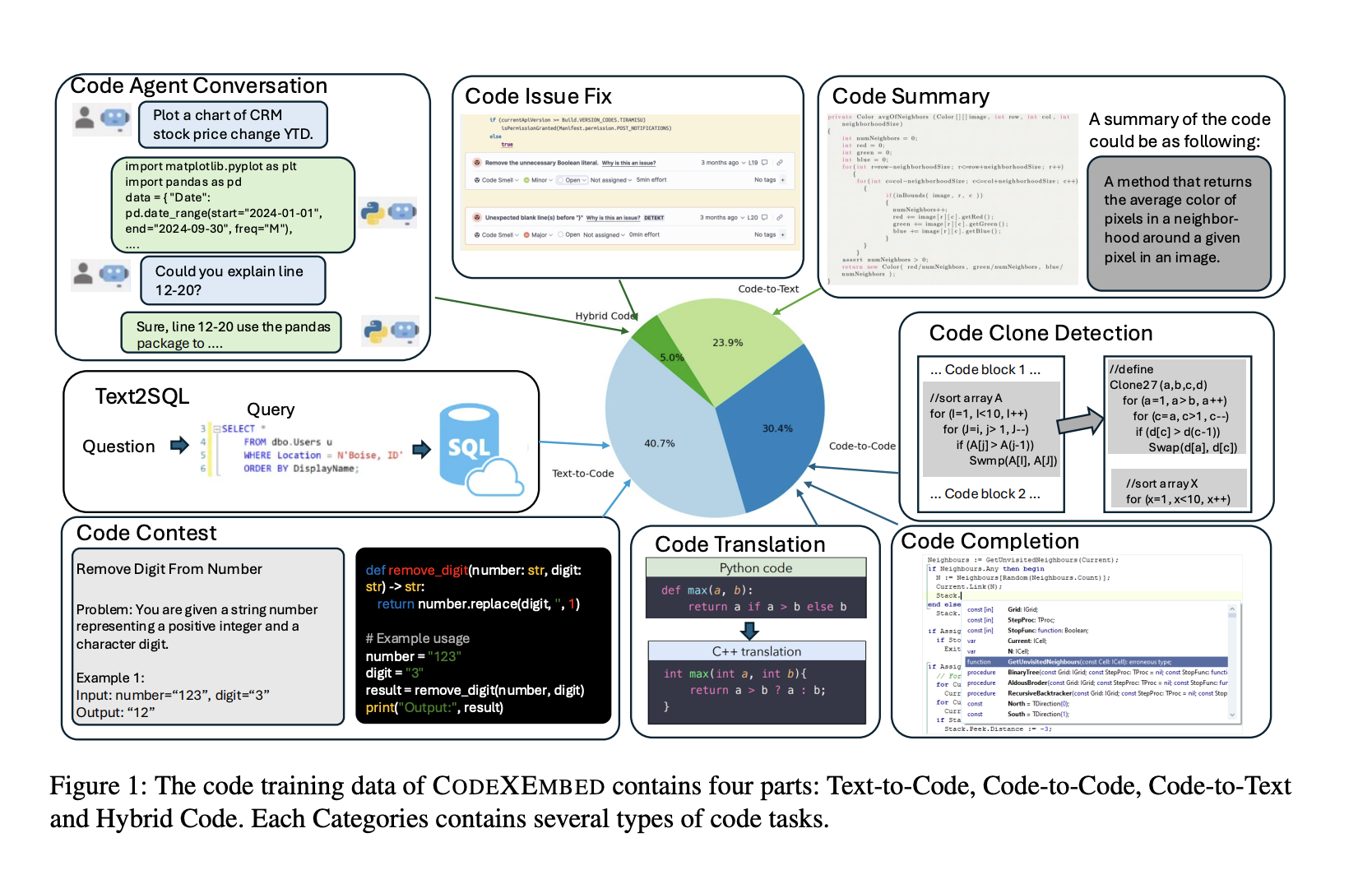
Understanding Code Retrieval in Software Development
Code retrieval is crucial for developers today. It helps access relevant code snippets and documentation quickly. Unlike regular text retrieval, code retrieval faces unique challenges due to the different structures of programming languages, dependencies, and the need for context. Tools like GitHub Copilot are making advanced code retrieval systems essential for boosting productivity and minimizing errors.
The Challenges of Current Models
Many existing retrieval models struggle with programming-specific details like syntax and variable dependencies. This limits their effectiveness in tasks such as code summarization, debugging, and language translation. While there have been improvements in text retrieval models, they fall short for code retrieval, showing a clear need for specialized models that enhance accuracy and efficiency across various programming tasks.
Introducing CodeXEmbed
Researchers at Salesforce AI Research have created CodeXEmbed, a set of open-source models tailored for code and text retrieval. Available in three sizes (SFR-Embedding-Code-400M_R, SFR-Embedding-Code-2B_R, and a 7-billion parameter model), these models cater to multiple programming languages and retrieval tasks.
Innovative Features of CodeXEmbed
CodeXEmbed employs a unique training method that combines 12 programming languages and five retrieval categories into a single framework. This enables it to handle various tasks like:
- Text-to-code retrieval: Converts natural language queries into relevant code snippets.
- Code-to-text retrieval: Generates explanations and summaries of code.
- Hybrid retrieval: Integrates text and code data for complex queries.
Its advanced training techniques optimize query and answer alignment while reducing irrelevant data influence, improving overall efficiency.
Performance Highlights
In tests, the 7-billion parameter model outperformed previous models, achieving over a 20% improvement on the CoIR benchmark. Even the smaller models showed strong performance. CodeXEmbed also excelled in text retrieval tasks, demonstrating its versatility and effectiveness.
Key Benefits of CodeXEmbed
- The 7-billion parameter model sets a new standard with top performance on key benchmarks.
- Smaller models provide practical options for those with limited computational resources.
- Supports a wide range of programming languages and retrieval tasks.
- Encourages community-driven research and innovation due to its open-source nature.
- Enhances retrieval-augmented generation systems for improved code completion and issue resolution.
Conclusion
Salesforce’s CodeXEmbed family marks a significant advancement in code retrieval. With its impressive performance and support for multiple programming languages, it is a vital tool for developers and researchers. The open-source model fosters innovation and bridges the gap between natural language and code retrieval.
For more information, check out the Paper, 400M Model, and 2B Model. Follow us on Twitter, join our Telegram Channel, and connect with our LinkedIn Group. Don’t miss out on our thriving ML SubReddit community with over 65k members.
Transform Your Business with AI
Stay competitive by leveraging AI solutions like CodeXEmbed. Here are some steps to get started:
- Identify Automation Opportunities: Find areas where AI can enhance customer interactions.
- Define KPIs: Measure the impact of your AI initiatives on business outcomes.
- Select an AI Solution: Choose tools that match your needs and allow for customization.
- Implement Gradually: Start with a pilot project, gather data, and expand as needed.
For advice on AI KPI management, reach out to hello@itinai.com. For ongoing insights, follow us on Telegram or Twitter.
Explore how AI can transform your sales processes and customer engagement at itinai.com.

























